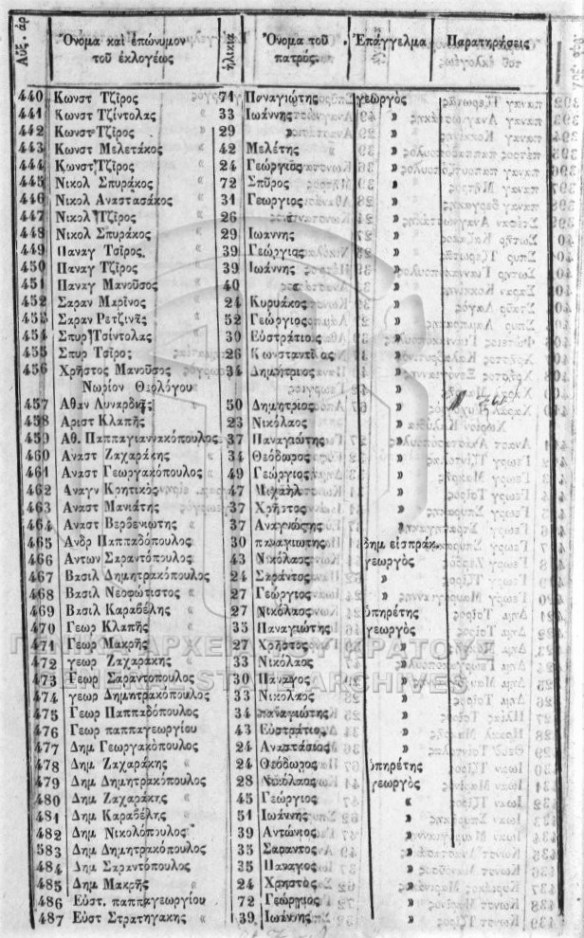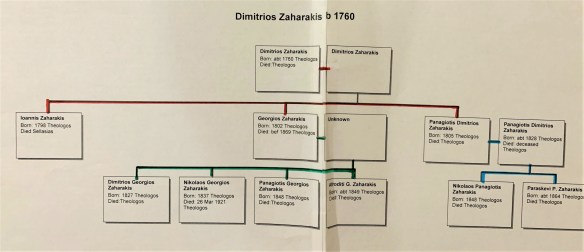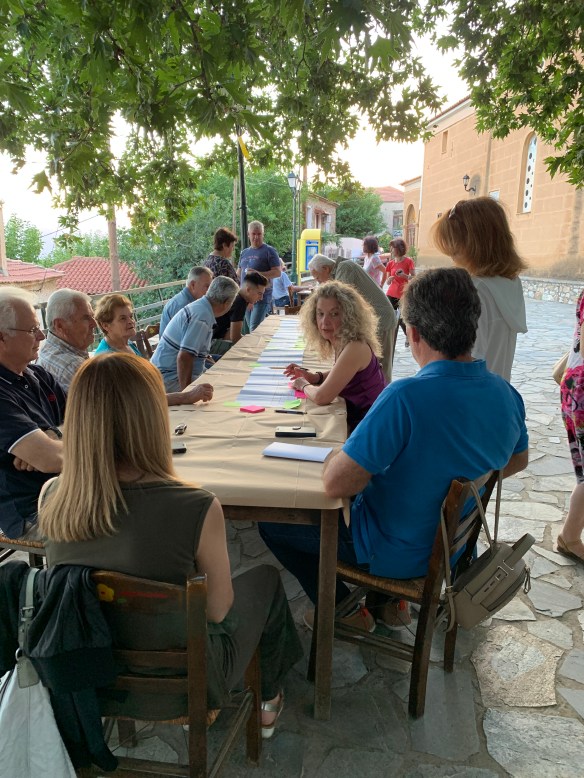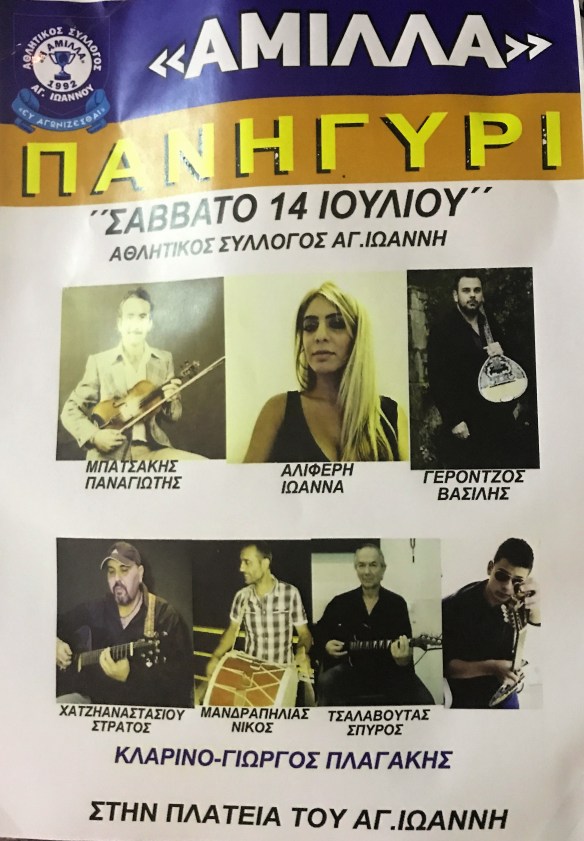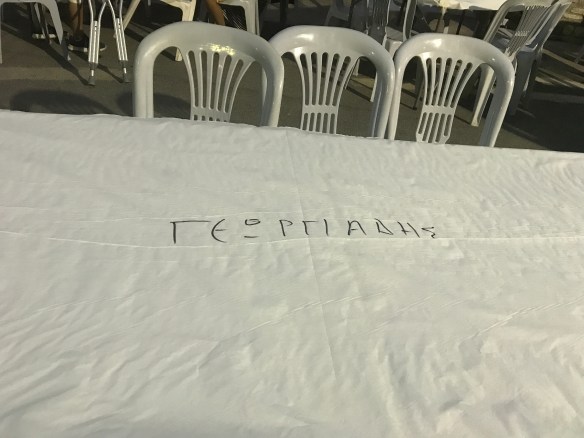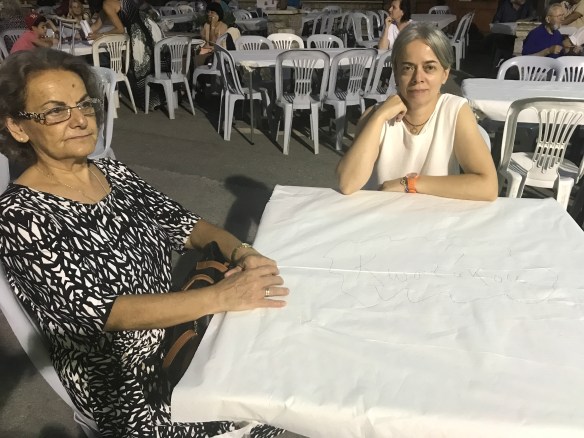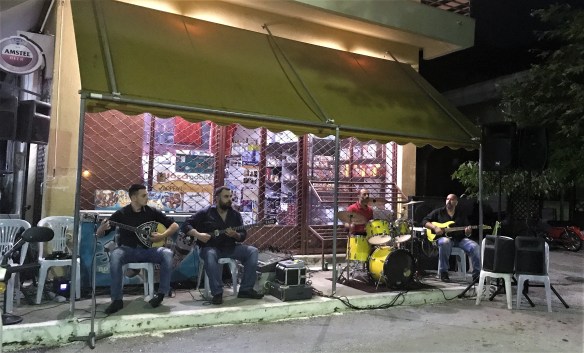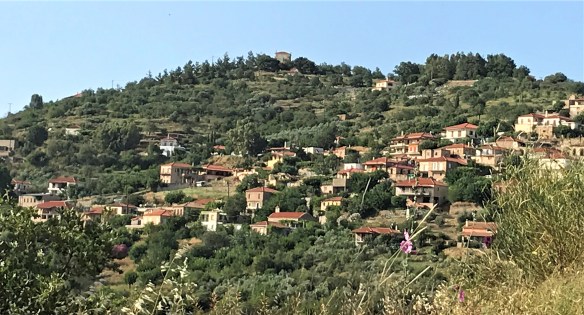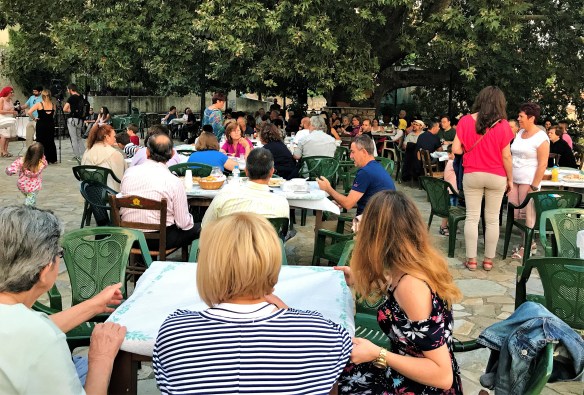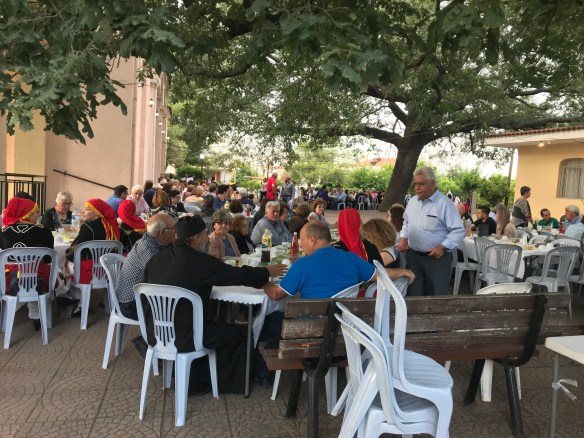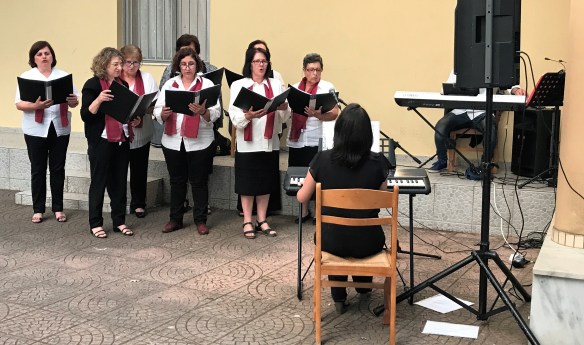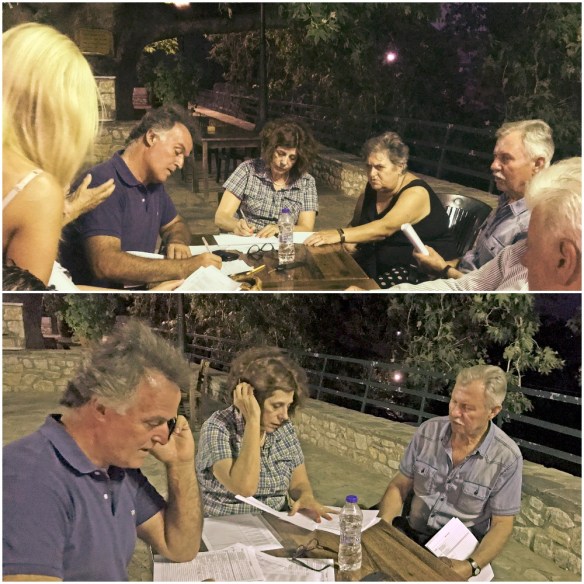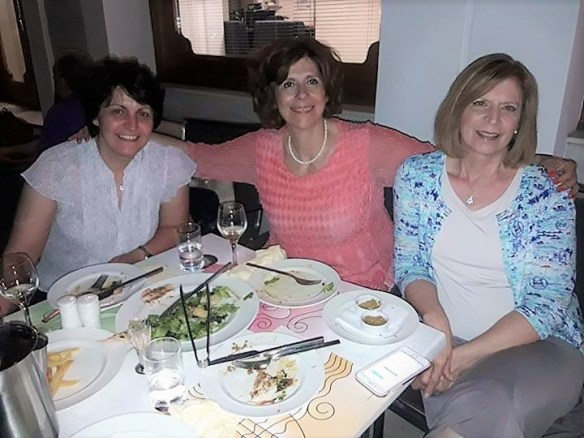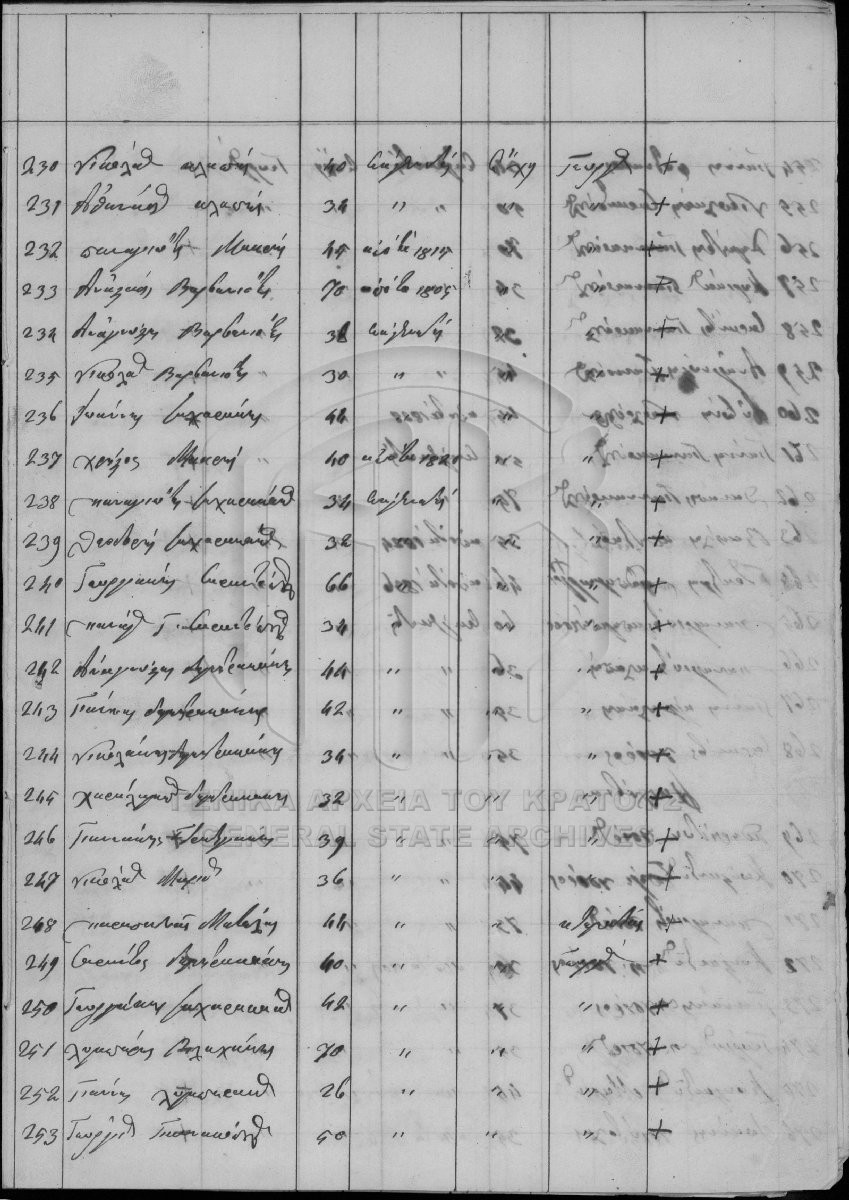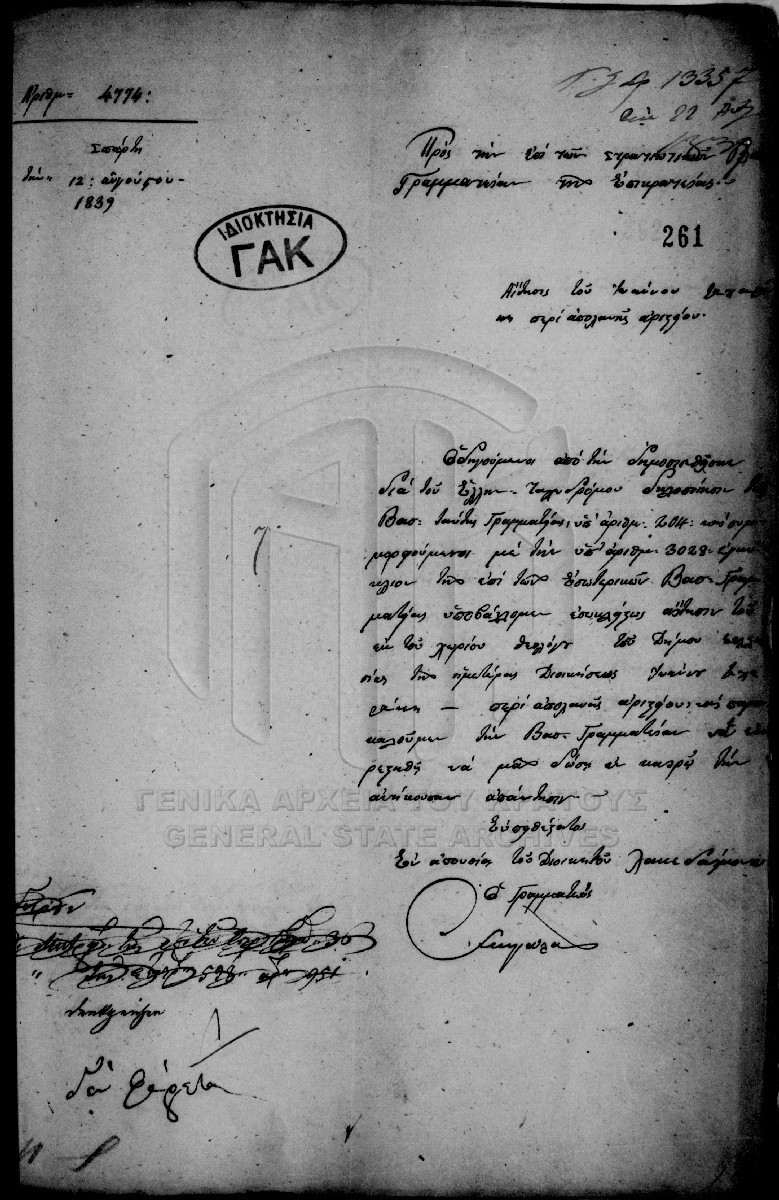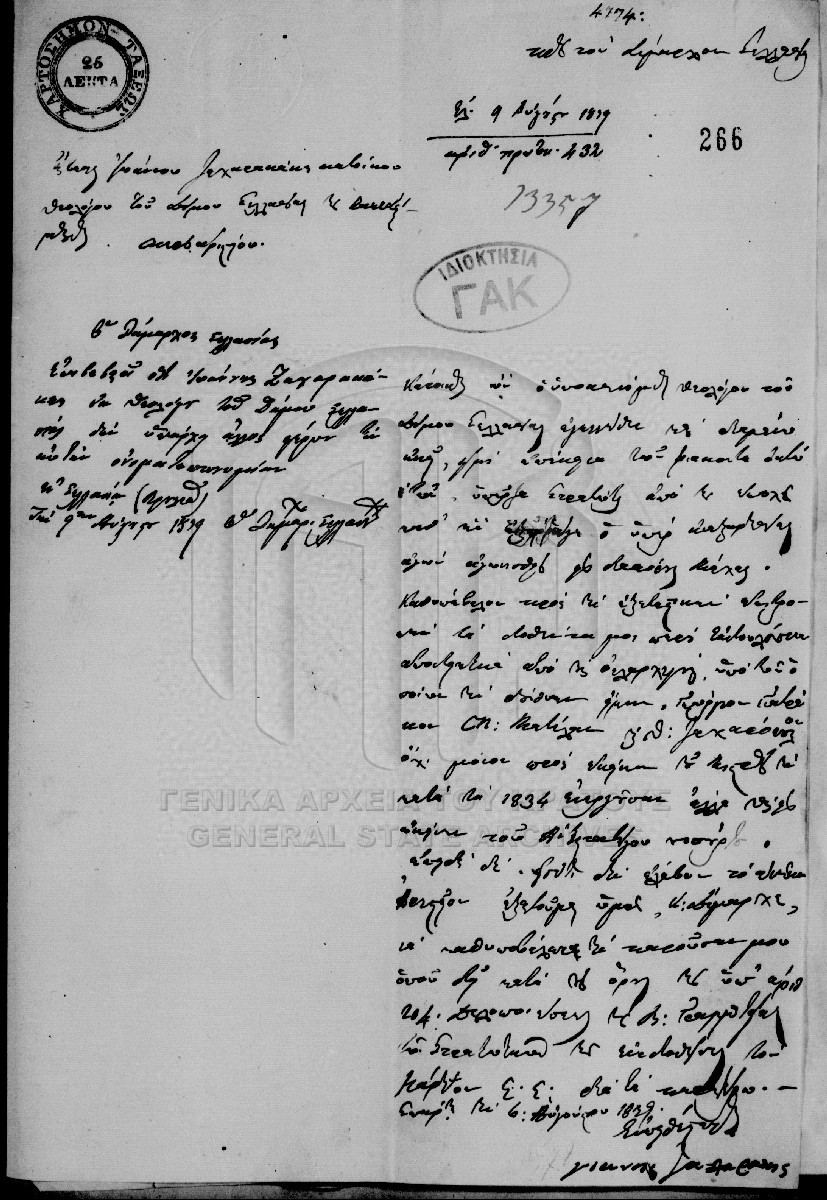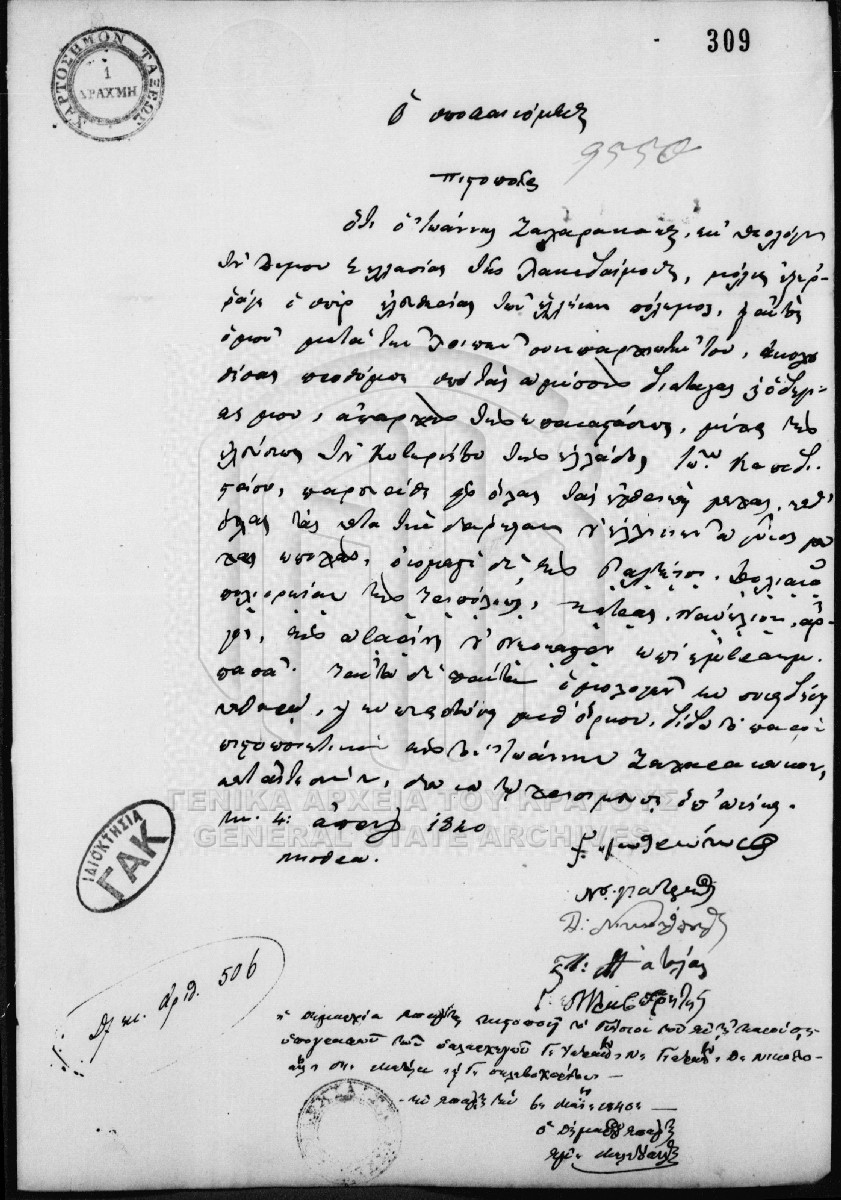The plateia is the heart and soul of every Greek village. Anchored by its peoples’ beloved Greek Church, amply shaded a huge plane tree, proudly displaying the marble War Memorial honoring its dead and surrounded by businesses and cafes, it is the central gathering point of the village. In the beautiful mountain village of Theologos, Lakonia, the plateia is very special to me as it is where members of my Zacharakis family meet for summer reunions.

During my last visit in 2023, I noticed with sadness that some buildings on the plateia were abandoned and in serious disrepair. Gone were places to gather indoors on a rainy or wintry day, to celebrate a baptism or mourn a death, to hold a bazaar or community event, or to house the Women’s Association of St. John Theologian1. The empty buildings made it seem as if the plateia had lost part of its soul.
Imagine my surprise—and my delight—when I received a message from my cousin, Georgia Zacharaki1, stating that a large building on the plateia had been donated from the city to the village, but it was in need of major renovations. “It is a wonderful venue and the location is perfect,” wrote Georgia, who is President of the Women’s Association. She and the Association members organized an initiative to raise funds and repair the building.
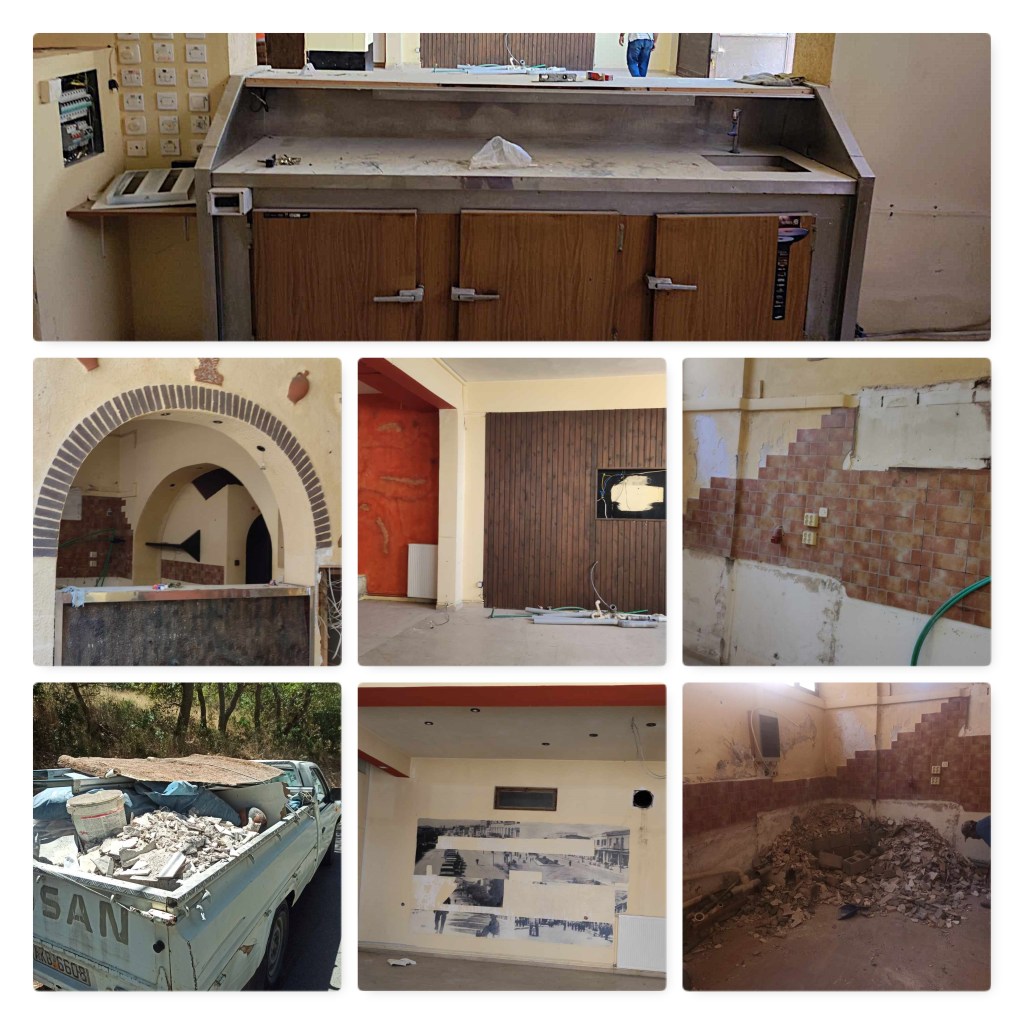
Much work needed to be done: interior walls, electrical work, and a complete overhaul of the kitchen area. When Georgia and I met in Sparta in early September, renovations were well underway. By late October, the project was near completion. So much work was done so quickly! The rooms are sparkling, bright, and beautiful.
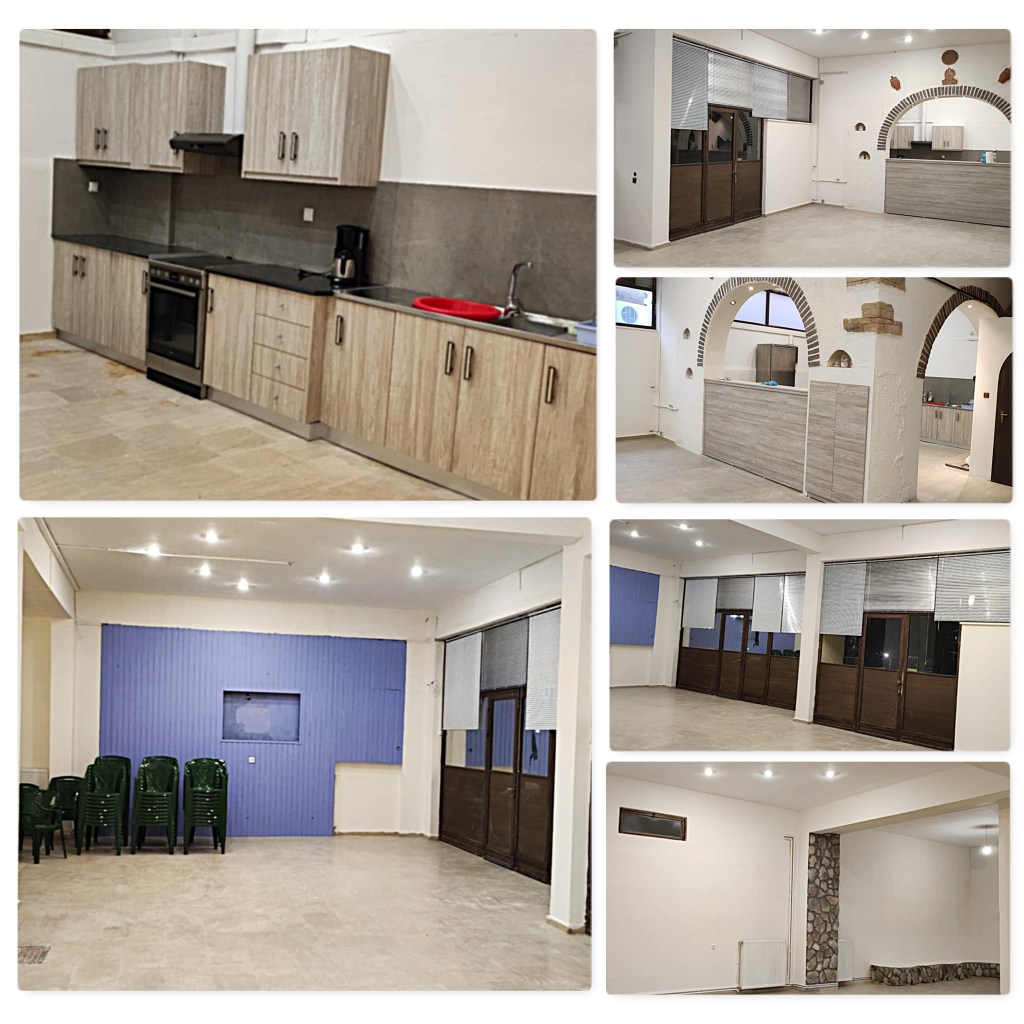
Donations of money, large and small, came from people in Greece and America. There were also many contributions of needed items such as appliances, kitchen utensils, blinds, glasses, coffee cups, etc. “If we had to pay for everything and did not have volunteer work and donations in money and materials, the cost to us would have been close to $10,000,” Georgia noted. Thus, every euro and every item was gratefully received and sincerely appreciated.
By the first of November, the venue was ready for use. A dedication ceremony was scheduled for Sunday, November 3. Women of the Association gathered happily in the new kitchen to prepare for the event by baking traditional Greek sweets such as diples and baklava.



The dedication on November 3, 2024, was joyfully attended by over 120 people throughout the area. The blessing on the venue was offered by the beloved village priest, Father Panagiotis Kotsios (below, left). He was joined by Archimandrite Ierotheos Varvitsiotis of the Monastery of Panagia Faneromeni of Anavryri (below, right) and Archimandrite Rafael Tsaltas of the Monastery of Panagia Koubari of Paleopanagia (below center; also representative of His Eminence Bishop Efstathios of the Metropolis of Monemvasia and Sparta).
Additional noted guests were three members of Parliament; two Deputy Mayors of Sparta; the representative of the Mayor, Deputy Mayor Mr. Antonakos; the former Mayor of Sparta, Mr. Valioti; and the Board of Directors of the Daughters of Penelope Sparta2.
The attendance of so many local dignitaries indicated that the strength, resourcefulness and abilities of the Women’s Association merited their support and recognition.
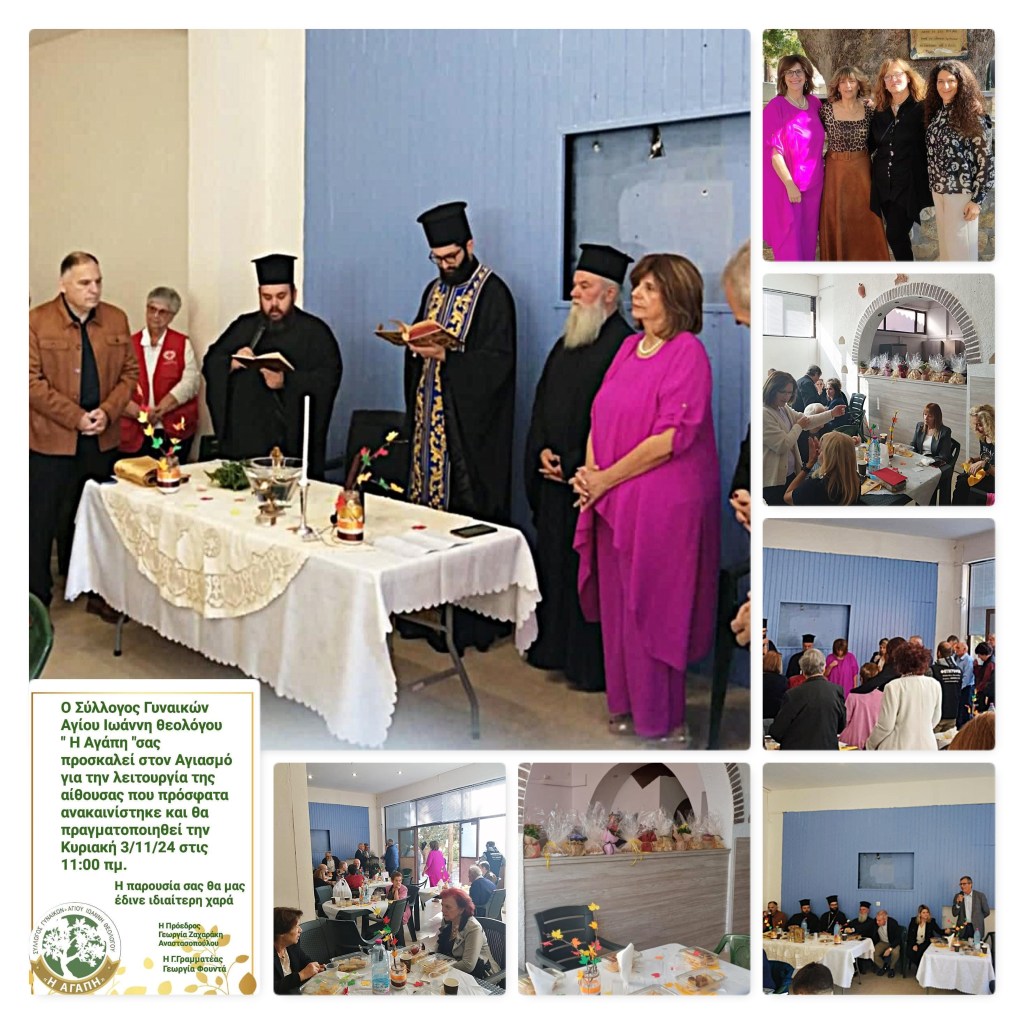
Although the main renovations are completed, additional work is required. Money is needed to install a heating system and to fix a water pipe. At the dedication, 20 trays of homemade sweets were raffled off and additional fundraising will occur. With cold, mountain winter months now arriving, a heating system is a necessity for the 300 permanent residents to gather indoors.
I am saddened that so many charming villages in Greece are abandoned and neglected as residents leave for employment in cities. However, I am relieved and elated that the soul of beautiful Theologos has been revived.
If you desire to make a donation to help towards purchasing a heating system, please contact me at: spartanroots1@gmail.com. Any amount will be gratefully accepted by our friends–and my family–in beautiful Theologos.

1Georgia Zacharaki is a founding member of the Women’s Association of Agios Ioannis Theologos, and a former Deputy Mayor of Sparta.
2“The women’s association is named Γυναικών Αγ.Ιωάννη θεολόγου Ηαγάπη — in English: the Women’s Association of Agios Ioannis Theologos Agapi (love). Because the village is named after the Apostle John Theologos who was Christ’s beloved as He appointed him as Virgin Mary’s son after Jis crucifixion and he preached Jesus’ word which that of LOVE, we named our association LOVE. The association was formed in 2017.” Georgia Zacharaki to Carol Kostakos Petranek, October 22, 2024.
3The Daughters of Penelope is a worldwide association formed in 1929 to promote Hellenism, Education, Civic Responsiblity, Philanthropy, and Family & Individual Excellence.




